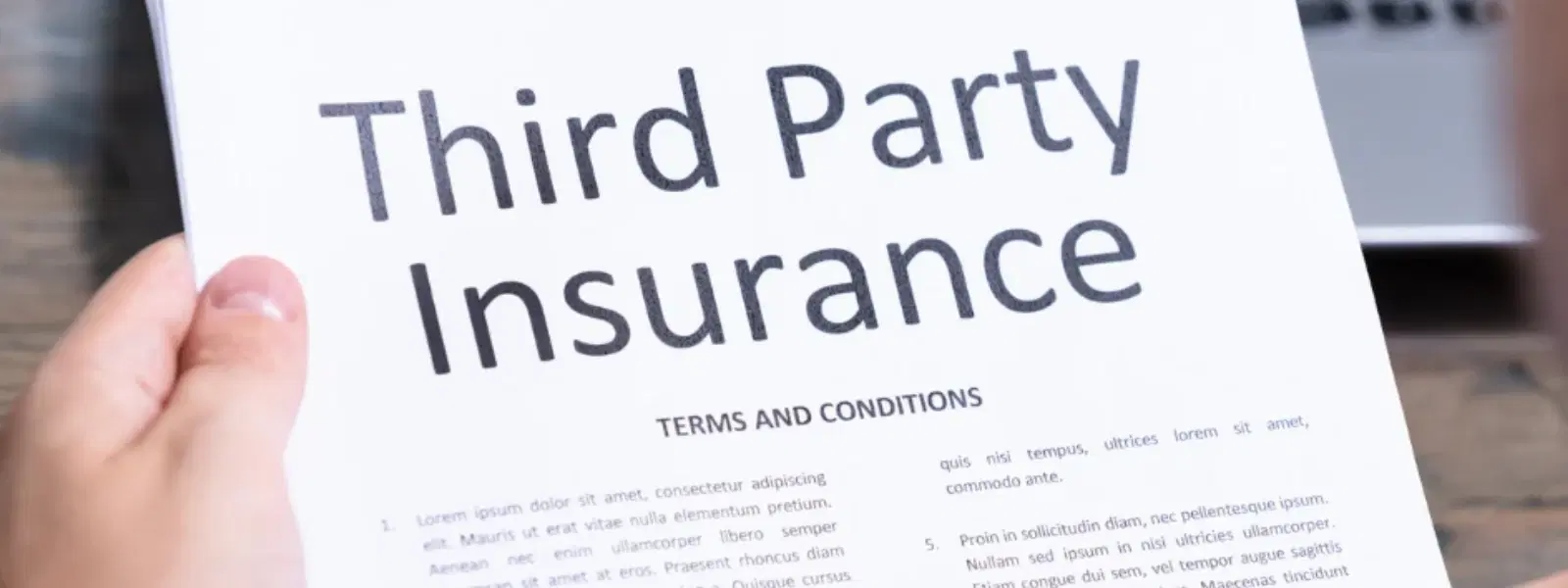
Insurance
•04 min read

Imagine being involved in an accident where you are not at fault. In such situations, understanding the process of filing a third party insurance claim becomes essential for ensuring timely financial protection and legal compliance. This guide explains the steps and key points involved in third party insurance claim settlements, helping you navigate the process with confidence.
Third-party insurance is designed to cover financial liabilities arising from damages or injuries a policyholder may cause to other parties. Under the Motor Vehicles Act, 1988, having this insurance is a legal requirement. In insurance terminology, the third party is the person or entity to whom compensation is payable when an insured event causes damage, distinguishing it from the insured (first party) and the insurer (second party).
Third-party claims typically arise in incidents where the insured vehicle causes property damage, bodily injury, or even death. The purpose of these claims is to provide financial compensation to the affected parties, thereby ensuring that the victims receive the required assistance for repair, treatment, or other related expenses.
Typically, third-party insurance covers property damage and medical expenses along with legal liabilities incurred due to the incident. However, there are specific exclusions such as claims arising from circumstances like drunken driving, underage driving, deliberate acts, or misuse of a vehicle for commercial purposes. It is important to thoroughly review your policy to understand the exact scope of cover as it may vary across different plans.
Filing a third party insurance claim involves several key steps:
The process begins by informing the insurer immediately after the incident via online platforms, telephone, or an app. Following this, filing an FIR at the nearest police station is mandatory, especially in cases involving fatalities or significant damage. It is crucial to gather evidence such as photographs, witness statements, and detailed accident information, which will support your claim.
Once you have documented the necessary evidence, complete the third party insurance claim form and submit it along with requisite documents, including a copy of the FIR, policy details, and any available accident evidence. In many cases, the insurer’s appointed surveyor will inspect the scene and assess the damage. If required, the case may also be registered with the Motor Accident Claims Tribunal, which helps in situations where claim disputes arise.

Having the correct documents is crucial for smooth claim processing. Ensure you have the following at hand:
A copy of the FIR, your insurance policy details, accident evidence such as photographs and witness statements, and medical reports if there are injuries involved.
While the exact timeframe for claim settlement may vary, it is important to note that delays can occur if documentation is incomplete or if legal procedures extend the process. Prompt communication and thorough submission of documents are key factors in ensuring a timely settlement.
In unfortunate cases involving fatalities, the process for filing a third party insurance claim for death becomes more complex. The compensation amount in such cases is typically determined based on factors including the deceased’s income, age, and number of dependents. Understanding these criteria and ensuring the submission of all necessary documents is crucial for a fair settlement.
When the insured vehicle causes damage to property, claimants must follow the standard procedure for gathering evidence, filing the claim, and coordinating with the insurer’s surveyor. Common scenarios include damage to buildings or other vehicles. Detailed records and thorough evidence collection greatly aid in establishing the extent of the damage and the corresponding claim value.
If the claim is disputed or if the insurer denies the claim settlement, the next step is to seek legal recourse. In such cases, the Motor Accident Claims Tribunal plays an important role in resolving disputes by evaluating the evidence and determining a fair outcome based on policy terms and legal standards.
It is important to notify the insurer immediately following an incident and to maintain accurate records of all proceedings. Cooperate fully with the insurer’s surveyor and provide detailed evidence. Conversely, avoid the temptation to provide false information and do not delay filing the claim or submitting the required documentation.

Some common errors include missing deadlines for filing the claim, submitting incomplete documents, and not following up with the designated surveyor. Being proactive and methodical in gathering and preserving evidence can help sidestep these issues.
To secure fair compensation, it is advisable to present all relevant evidence clearly and comprehensively. Familiarize yourself with the specific terms of your policy and, if needed, consult legal or professional advice, especially in complex cases. This approach ensures that all aspects of the claim are effectively communicated to the insurer.
You can file a third party insurance claim online by visiting the insurer’s website, where you can fill out the claim form and upload required documents, including the FIR and accident evidence.
Most insurers require claims to be filed within a short period after the incident, so it is important to act promptly. Refer to your policy for the exact time frame.
The compensation amount for death claims is determined based on factors such as the deceased’s income, age, and number of dependents as specified in legal guidelines.
The claim form must be completed and submitted along with supporting documents, which include a copy of the FIR, your insurance policy details, and evidence of the accident.
The process involves immediately notifying your insurer after the incident, filing an FIR with the police, submitting the required claim form and documentation, and, if necessary, registering the case with the Motor Accident Claims Tribunal.
In summary, third party insurance claim settlements protect you from the financial liabilities arising from incidents that cause damage or injury to others. Understanding the claim process — including the necessary documentation, timelines, and special cases such as death or property damage claims — is critical for ensuring that the settlement is handled efficiently and fairly. By being proactive, organized, and informed, you can navigate the complexities of third party insurance claims with greater confidence.